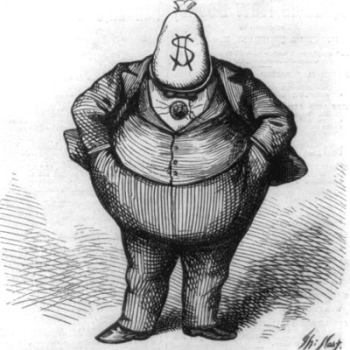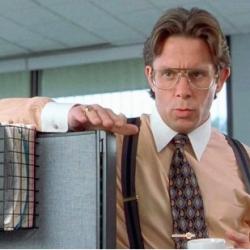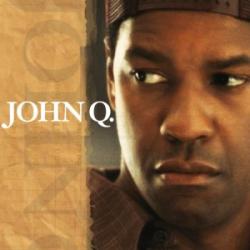Greg Howard, “America Is Not For Black People”
The United States of America is not for black people. We know this, and then we put it out of our minds, and then something happens to remind us. Saturday, in the St. Louis suburb of Ferguson, Mo., something like that happened: An unarmed 18-year-old black man was executed by police in broad daylight.
… By all accounts, Brown was One Of The Good Ones. But laying all this out, explaining all the ways in which he didn’t deserve to die like a dog in the street, is in itself disgraceful. Arguing whether Brown was a good kid or not is functionally arguing over whether he specifically deserved to die, a way of acknowledging that some black men ought be executed.
To even acknowledge this line of debate is to start a larger argument about the worth, the very personhood, of a black man in America. It’s to engage in a cost-benefit analysis, weigh probabilities, and gauge the precise odds that Brown’s life was worth nothing against the threat he posed to the life of the man who killed him. It’s to deny that there are structural reasons why Brown was shot dead while James Eagan Holmes — who on July 20, 2012, walked into a movie theater and fired rounds into an audience, killing 12 and wounding 70 more — was taken alive.
To ascribe this entirely to contempt for black men is to miss an essential variable though — a very real, American fear of them. They — we — are inexplicably seen as a millions-strong army of potential killers, capable and cold enough that any single one could be a threat to a trained police officer in a bulletproof vest. There are reasons why white gun’s rights activists can walk into a Chipotle restaurant with assault rifles and be seen as gauche nuisances while unarmed black men are killed for reaching for their wallets or cell phones, or carrying children’s toys.
Steve Thorngate, “A Throwback to Birmingham”
In April, a dispute over cattle grazing fees led to escalating tensions in Nevada between law enforcement and heavily armed protesters. Despite threats against them, the cops allowed protesters to assemble anywhere they wanted to on public land, provided they were peaceful and didn’t impede the feds’ work. Days later, when the conflict culminated in a tense armed standoff, federal rangers threatened tear gas but maintained restraint — until local law enforcement defused the situation by backing down.
The protesters were mostly white.
This weekend, protests over a cop’s fatal shooting of an unarmed, noncriminal, not-fatherless teenager led to a massive police militarization — a militarization that began before any looting or rioting did — in Ferguson, Missouri, a St. Louis suburb. Here, cops in riot gear tear-gassed people assembling on their own property. Protesters were shot with rubber bullets; a pregnant woman was forced to lie on her stomach. The small town remains basically under militarized police occupation.
Ferguson is mostly black. Its police force is almost entirely white.
Kimberly Peeler-Ringer, “The Devaluation of Black Bodies Continued”
About a year ago I wrote an essay entitled “The Persistent Devaluation of Black Bodies.” And since then, I have had way too many opportunities to revisit that piece due to the unceasing assault upon Black and Brown bodies by those whose charge is to protect and to serve. Those whose salaries are supplemented with taxes we pay. This is a systemic problem that is repeating itself across the nation. It is not a Black problem. It is a systemic societal problem, not just a case of “a few bad apples.” And it is worthy of the attention of every American citizen.
In just the past month alone, an unarmed great-grandmother, Marlene Pinnock, was captured on cell phone video being beaten senseless by a state trooper on a California freeway onramp. A Black man, Eric Garner, perished under the restraint of several police officers and in the presence of emergency medical technicians on a sidewalk in a Staten Island, NY neighborhood known as Tompkinsville. And just a few days ago a Black teen, Michael Brown, was shot dead, multiple shots piercing his body, by police under unknown circumstances in a suburb in St. Louis, Missouri. What the hell is going on in law enforcement?
Mychal Denzel Smith, “The Death of Michael Brown and the Search for Justice in Black America”
The St. Louis Post-Dispatch editorial board wrote, “Michael Brown didn’t get due process.” It’s worse than that. Michael Brown was robbed of his humanity. His future was stolen. His parent’s pride was crushed. His friends’ hearts were broken. His nation’s contempt for black youth has been exposed. A whole generation of young black people are once again confronted with the reality that they are not safe. Black America is left searching for that ever-elusive sense of justice. But what is justice?
Justice for Renisha would have looked like Michael Brown being able to attend college. Justice for Trayvon would have looked like Renisha McBride getting the help she needed the night of her accident. Justice for Oscar Grant would have looked like Trayvon Martin making it home to finish watching the NBA All-Star game, Skittles and iced tea in tow. And so on, and so on. Justice should be the affirmation of our existence.
… Counting the bodies is draining. With every black life we lose, we end up saying the same things. We plead for our humanity to be recognized. We pray for the lives of our young people. We remind everyone of our history. And then another black person dies.












